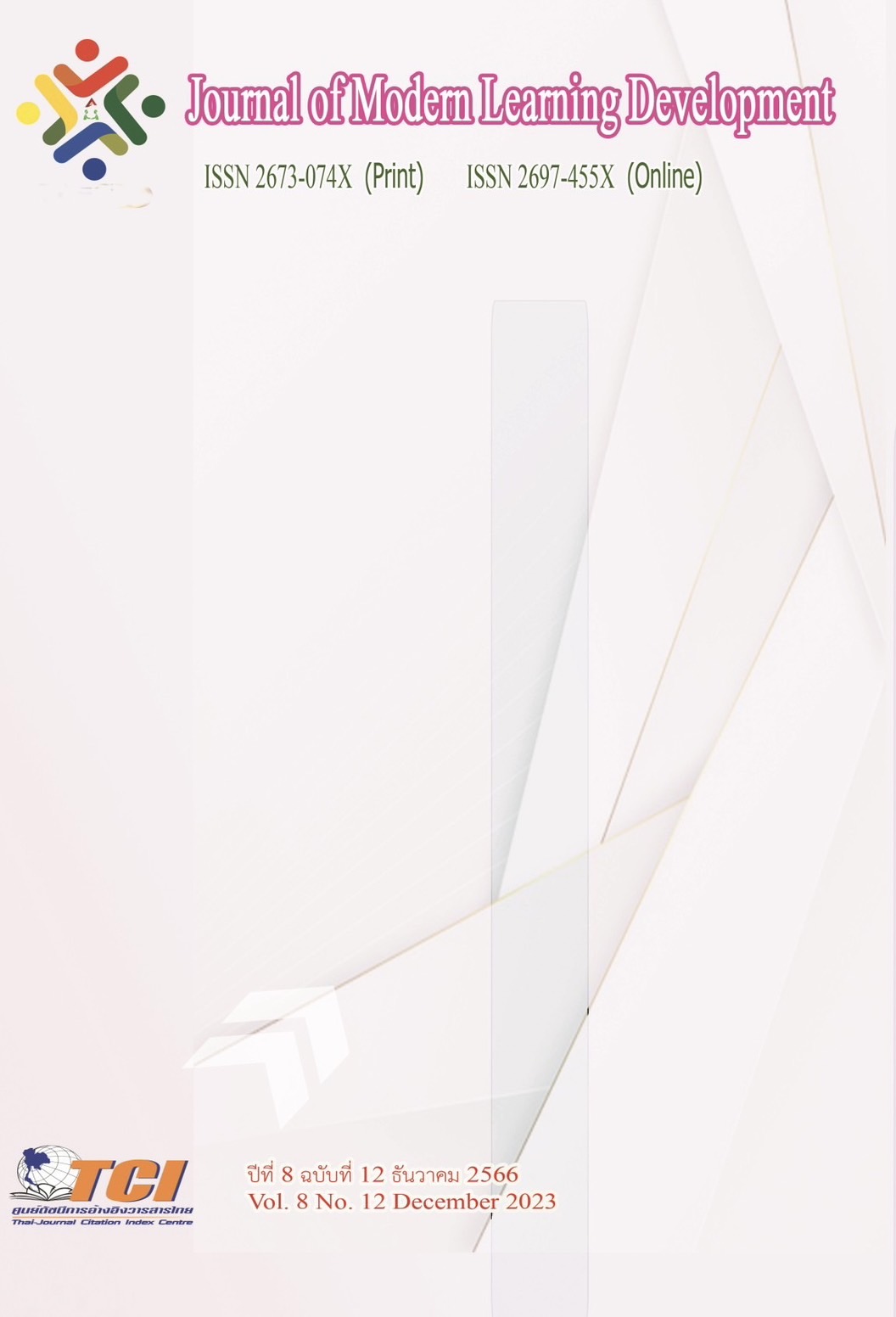Perception and Digital Media Use of Consumers Who Shop Online
Main Article Content
Abstract
The objectives of this research were to study 1) the accessibility, awareness, and literacy of digital media among consumers who purchased online products, and 2) the digital media usage behavior of consumers who buy online. This is quantitative research. The sample size of the research group was 400 people, randomly selected using the Taro Yamane formula. The error level was 95 percent. The research tools were questionnaires, which collected data by submitting questionnaires via online channels. Data were analyzed using descriptive statistics, including mean, percentage, frequency distribution, and standard deviation.
The results of the research revealed that 1) the accessibility, awareness, and digital media literacy of consumers who shop online found that most respondents accessed online shopping via smartphones, followed by tablets, notebooks, and computers, respectively, and they have a high level of digital literacy. 2) The behavior of consumers who shop online when using digital media found that the majority of respondents shop online through TikTok Lives, followed by Facebook Lives, and the least through brand-owned media. By giving reasons to support purchases on such channels, they prefer to watch live sales presentations more. Because they can ask and talk to the seller immediately while the seller goes live selling the product. Most of the respondents cited the reasons for buying products online as being that they were able to make purchases quickly and easily, had the products they wanted to buy available for purchase, and were able to compare quality and prices. Store trust and free shipping are the second reasons.
Article Details
References
กรุงเทพธุรกิจ. (2565) เปิดสถิติใช้ "ดิจิทัล" ทั่วโลก "ไทย" ติดอันดับโลกเพียบ!!. ออนไลน์. สืบค้นเมื่อ 12 ธันวาคม 2565. แหล่งที่มา: https://www.bangkokbiznews.com/tech/988061
ไทยโพสต์. (2565). ศูนย์วิจัยกสิกรไทยคาดตลาด E-commerce ในปี 65 มีมูลค่าราว 5.6 แสนล้านบาท. ออนไลน์. สืบค้นเมื่อ 12 ธันวาคม 2565. แหล่งที่มา: https://www.thaipost.net/economy-news/95153/
รติกร สูงสมสกุล และ ณัฐชา วัฒนประภา. (2562). การศึกษาพฤติกรรมการใช้สื่อสังคมออนไลน์บนทวิตเตอร์เชิงลบ. การประชุมวิชาการนำเสนอผลงานวิจัยระดับชาติของนักศึกษาด้านมนุษย์ศาสตร์และสังคมศาสตร์ ครั้งที่ 2. วันที่ 19 มกราคม 2562, คณะมนุษยศาสตร์และ สังคมศาสตร์ มหาวิทยาลัยราชภัฏสวนสุนันทา.
ศูนย์วิจัยกสิกรไทย. (2565). 5 กติกาใหม่ตัวเร่งธุรกิจออนไลน์. ออนไลน์. สืบค้นเมื่อ 21 ธันวาคม 2565. แหล่งที่มา: https://www.kasikornbank.com/th/business/sme/KSMEKnowledge/article/ MarketingTips/Pages/5-tricks- for-boost-online-sale.aspx
ศูนย์วิจัยกสิกรไทย. (2565). 4 ความท้าทายของผู้ประกอบการ E-commerce. ออนไลน์. สืบค้นเมื่อ 11 พฤศจิกายน 2565. แหล่งที่มา: https://www.kasikornresearch.com/th/analysis/k-social-media/Pages/B2C-E-Commerce-FB-23-03-2022.aspx
TNN Online. (2564). ถอดรหัส 3 ปมปัญหา เหตุใดการ "รู้เท่าทันสื่อ" ในเด็กไทย จึงยังไม่กระเตื้อง. ออนไลน์. สืบค้นเมื่อ 11 ธันวาคม 2565. แหล่งที่มา: https://www.tnnthailand.com/news/ tnnexclusive/86532/
We Are Social. (2566). สถิติ Digital, Social, และ Mobile Media ของประเทศไทยปี 2023. ออนไลน์.สืบค้นเมื่อ 6 มกราคม 2566. แหล่งที่มา: http://www.veedvil.com/news/digital-in-thailand-2023/.
Bourne, L. (2014). Women are driving the growth of social media, new report says. Online. Retrieved 2022 September 21. from: http:// stylecaster.com/womensocialmedia/ #ixzz3i0NZTwmO
Jamjuree, D. (2020). Learning design for generation Z. Bangkok: Graduate School of Srinakharinwirot University. Online. Retrieved 2022 September 29. from: http:// www.curriculumandlearning.com
Kemp, S. (2020),). Digital 2020: Thailand. Online. Retrieved 2022 December 15. from : https://datareportal.com/reports/digital-2020-thailand
Khunpol, S. (2020). The media literacy for indirect advertising on social media marketing of alcohol beverages affects to youth drinking of undergraduated in Songkhla province. Siam Communication Review. 19 (1), 55-67.
Livingstone, S. (2004). Media literacy and the challenge of new information and
communication technologies. The Communication Review. 7 (1), 3-14.


